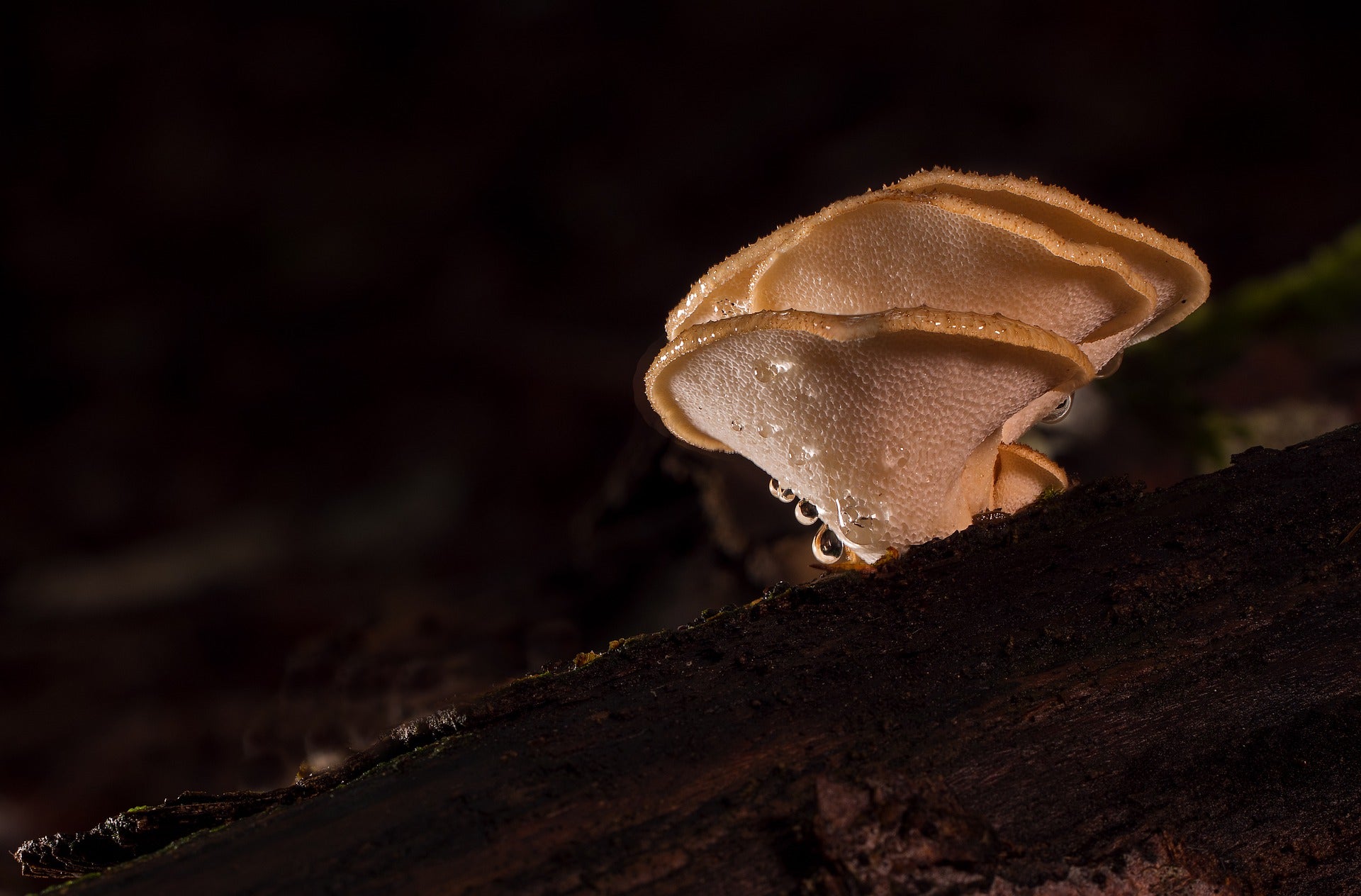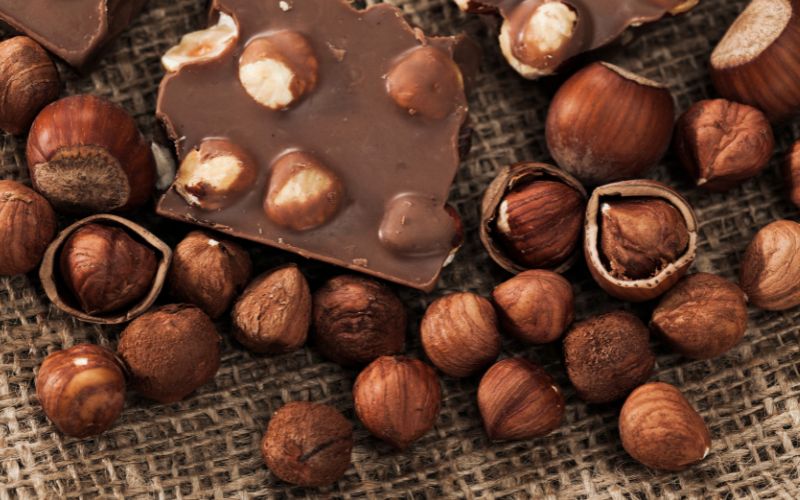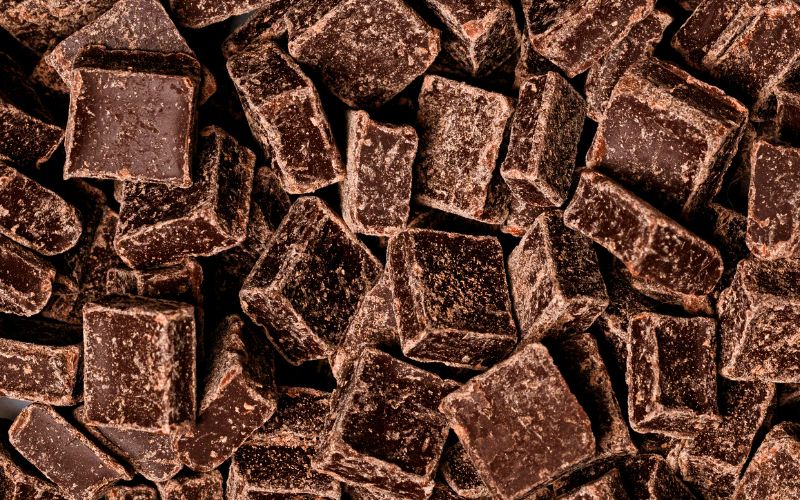When we hear the word “mushroom” we think of three things; poisonous forest-floor fungi, portobellos, and psychedelics. But now, we have a fourth to add to that list, superfood. As with any living being, the directive of mushrooms has always been to survive; and as the lifeblood of many ecosystems -essential to the breaking down of biomatter- mushrooms are forced to survive in the harshest and least “sanitary” of environments. As a result, mushrooms have developed a rigorous immune system amazingly effective at fighting off bacteria.
Mycelium
Although we often identify mushrooms by their above ground blooms, the majority of the “mushroom” grows underground. This large underground growth is also referred to as mycelium. Small holes in compact soil allow the stems (hyphae) of mycelium to extract oxygen and nutrients from the soil by growing through the small openings.
There are two different types of mycelium, septate and coenocytic. Septate have dividers between cells called septa, and septa have openings between its cells called pores. These pores allow cytoplasm and nutrients to flow throughout the cells and nourish the mycelium.
Coenocytic mycelium forms one long uninterrupted cell with many nuclei. As one long cell, nutrients absorbed form each hyphae easily spread throughout the mycelium.

Methods of Serving
In Indonesia, mycelium is sometimes used as a meat substitute. By controlling the fermentation of soybeans, mycelium binds the beans, making what is internationally known as Tempeh.

Reishi Mushroom
The usage of Reishi mushroom can be traced back 2000 years to China’s Eastern Han Dynasty. Included in the ‘Classic of Materia Medica’, the almost supernatural powers of the Reishi mushroom have been known/ speculated upon for millennia.
Extremely rare in the wild, Reishi was initially only affordable for the Nobility, possibly aiding in its sacred and revered position in Chinese medicine and culture. Thought to strengthen one's heart, enhance memory, and have anti-aging effects, the State Pharmacopeia of the People's Republic of China, states that Reishi should be used to replenish Qi, soothe the effects of asthma and unpleasant coughs, and to ease one’s mind.
 Modern in-vitro studies have yielded supportive data concerning Reishi’s anti-cancer, anti-viral, antioxidant, and antibacterial reputation. Some studies have also shown Reishi to protect against gastric and liver injury.
Modern in-vitro studies have yielded supportive data concerning Reishi’s anti-cancer, anti-viral, antioxidant, and antibacterial reputation. Some studies have also shown Reishi to protect against gastric and liver injury.
Methods of Serving
Reishi is best used in water-based extracts such as soup, tea, and broths, in order to obtain its full medical benefits. Some even simmer Reishi and include it in large, flavor-diverse dishes.
Chaga Mushroom
The name “Chaga” originates from the Ural mountains region in what is modern day Russia. Growing on the side of birch trees in the cold Taiga forests of the northern United States, Scandinavia, Korea, Japan, Russia, and Canada, chaga has been a staple in Russian culture for centuries. Rumor has it that Tsar Vladimir Monomakh used the mystical mushroom to cure his lip cancer in the 12th century. Although just a rumor at the time, even modern studies have shown chaga to battle tumor growths through its cell-toxic and quorum sensing capabilities, made possible by the MeOH compound present in chaga. Quorum sensing is the ability to effectively sense pathogens, an integral first step in the fighting of tumors.

As these anti-cancer studies were in-vitro, the cells were isolated then tested. These differ from human studies, as eating and digesting Chaga is different from isolating cells of chaga and “inserting” them into cancer cells.
Since Chaga is exceptionally high in antioxidants, this high concentration is maintained even in a tea. Most, but not all, of Chaga’s nutrients can be absorbed through tea. If you wish to obtain the remaining nutrients, a Chaga tincture is a versatile solution. As opposed to just a tea, the tincture will retain any unabsorbed nutrients. Using 100% alcohol as a base is the best option, while using vodka and gin are welcomed alternatives.
Lion’s Mane
Known as Yamabushitake in Japan, and Hou Tou Gu in China, the strikingly beautiful Lion's Mane is typically found in the mountainous regions of Asia. Unlike other mushrooms, the chemical makeup of Lions Mane allows it to pass the Blood-Brain Barrier, therefore directly affecting the Central Nervous System. By bypassing the blood-brain barrier, Lions Mane is shown to stimulate nerve growth in the brain and to increase "brain power".
Further studies have shown Lions Mane to have a preventive role against neurodegeneration. By passing the blood-brain barrier, the nerve growth factor counteracts the neurodegeneration that causes Alzheimer disease.
Lion’s Mane has also exhibited anti-cancer capabilities. Its effects on the immune system caused by its complex carbohydrates and proteins theoretically make it an easy natural addition to cancer treatments.
 Preparation
PreparationFry with butter, roast in oil, toss it in your tea; essentially, whatever you do with regular store bought mushrooms, you can do with Lion's Mane.
Turkey Tail
With a tough and leathery surface rendering it inedible when raw, Turkey Tail has been in the Chinese Materia Medica since 200 B.C. and should be in your diet now.
An extremely versatile mushroom, Turkey Tail grows everywhere from the cold Taiga to tropical and temperate forests. Interestingly, it has 15 known sister species, yet none of these are known to be poisonous (to humans at least).
 Just like Lions Mane, Turkey Tail exhibits a natural inclination to be incorporated into cancer treatments due to its complex carbohydrates and proteins. These complex chemicals contribute to the mushroom's ability to pass the blood-brain barrier and directly affect the Central Nervous System. In addition to its shown effectiveness against lung and gastro-intestenal cancer, Turkey Tail also has immunostimulatory effects.
Just like Lions Mane, Turkey Tail exhibits a natural inclination to be incorporated into cancer treatments due to its complex carbohydrates and proteins. These complex chemicals contribute to the mushroom's ability to pass the blood-brain barrier and directly affect the Central Nervous System. In addition to its shown effectiveness against lung and gastro-intestenal cancer, Turkey Tail also has immunostimulatory effects.


